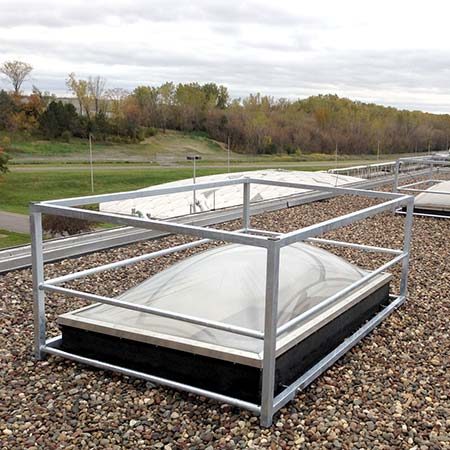Written by Chris Taylor, National Practice Leader, Occupational Health & Safety, Pinchin Ltd.
While items that Pinchin deals with such as asbestos represent the major killer in our workplaces (still), falls represent the single greatest cause of injury in most jurisdictions in Canada. Whether these falls are from heights, or simply due to things like poor working surfaces, injuries from falls cause a significant impact to workers, businesses and our health care system.
While many of the promotional items during Fall Protection Month are focused on individuals, particularly older individuals, I thought I would take the month to highlight some of the more common “fails” that Pinchin has observed over the years. Each week I will focus on a different fall aspect, what we often see in workplaces, and what options are out there to protect yourselves and your employees.
Roofs
I thought I would start with roofs. Sloped roofs may seem like obvious hazards, particularly as we enter the winter season, but roofers continue to feel that they are exempt from using controls such as fall protection, guardrails, etc, in all circumstances.
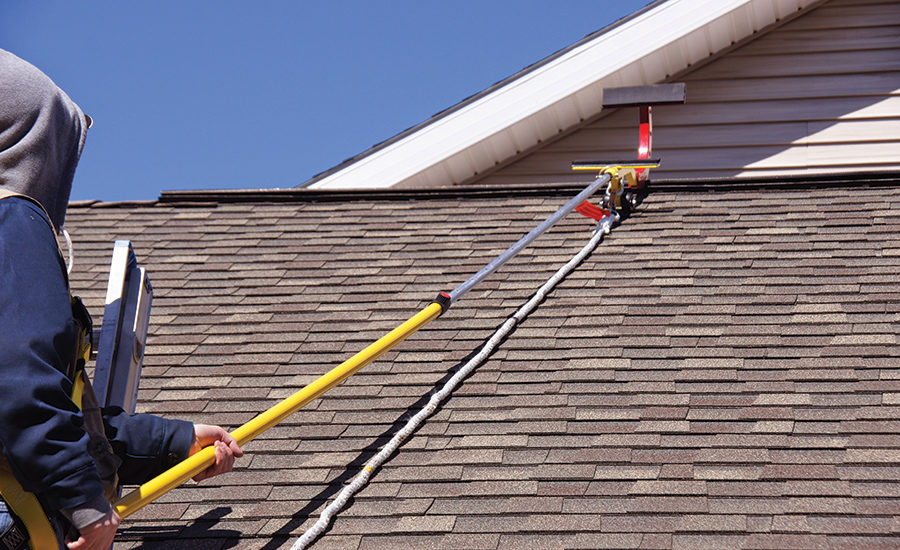
There are now numerous devices available, even for the “first man up/last man down” scenario that often had to be done without any protection at all. An example of this is the Ridgepro Anchor seen above.
But one of the more common fails that we see, may at first seem less hazardous, but is a common issue and that relates to flat roofs. Most jurisdictions in Canada require some form of prevention of fall, even on flat roofs, whether that be guardrails, marking systems, etc. But many common issues remain. The one I personally find the most bothersome (based on having to hoist myself up) is the typical roof hatch like this one:
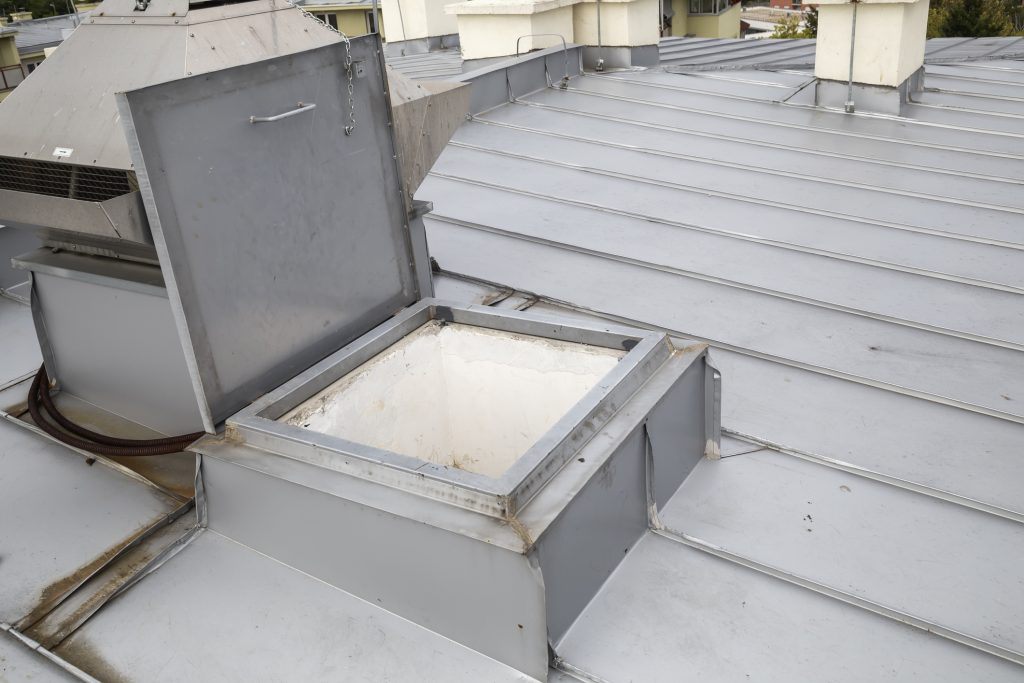
Now, this hatch meets Building Code requirements. But it almost certainly is more than 3 m in the air, has no guardrails around it, nothing to grab onto safely to hoist yourself out, and as often as not, is within 2 m of a roof edge. Therefore, it would run afoul of safety legislation.
What we would want to see is something like this:
Skylights
A less common issue, but no less dangerous relates to skylights. As you can see in the photo below, old skylights were never designed for someone to land on them from above.
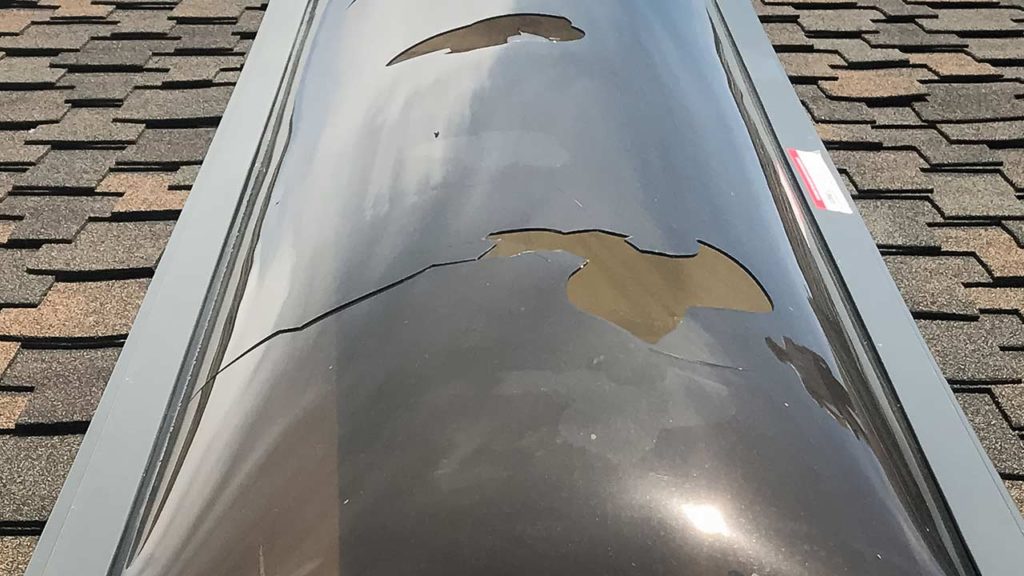
It can be very hard to determine just by looking at them, whether or not they are designed to be fallen onto safely, and if you have older skylights, you may need to look at guardrails around them (if not wanting to affect the “view”) like this.
Even better in the long run (as these often leak causing water dam into your building) is to simply replace them with modern ones designed to take a fall.
Ladders
The final item that we see only directly relates to roofs – and that’s access ladders. A common thing we are seeing is property managers cutting the bottoms off them to prevent people from illegally accessing the roof.
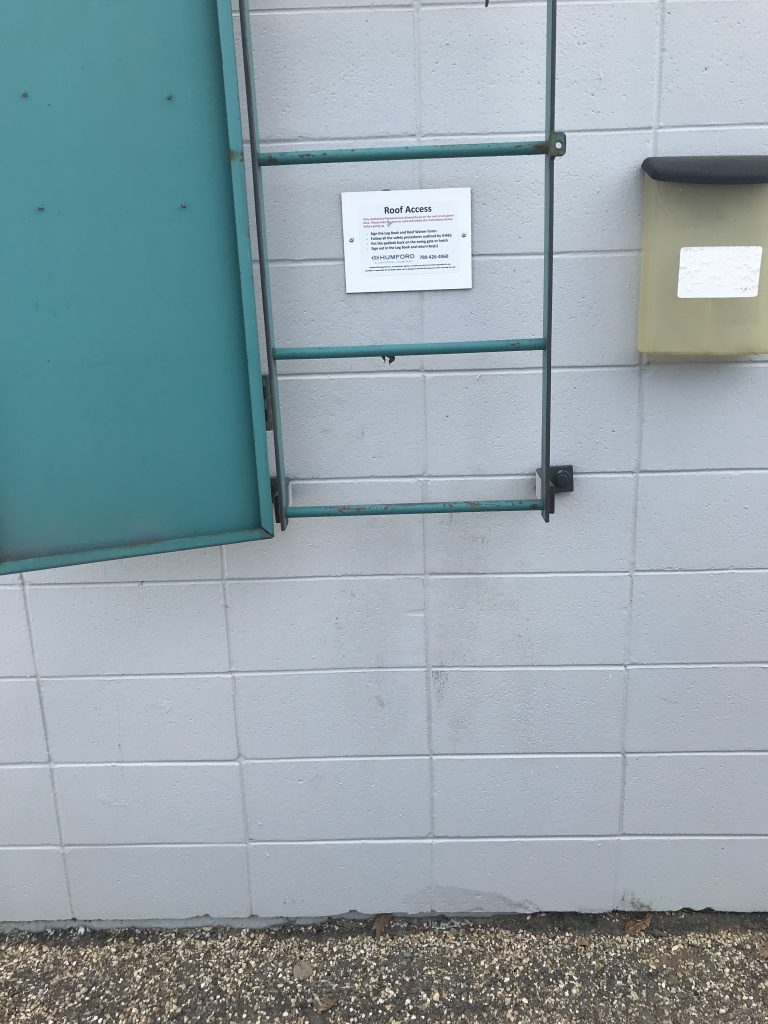
By not going to ground, you have the fall risk from trying to access it from a secondary source (like another ladder), or from people just trying to use it without another way up. If the goal is to prevent unauthorized access, then devices such as these should be used.
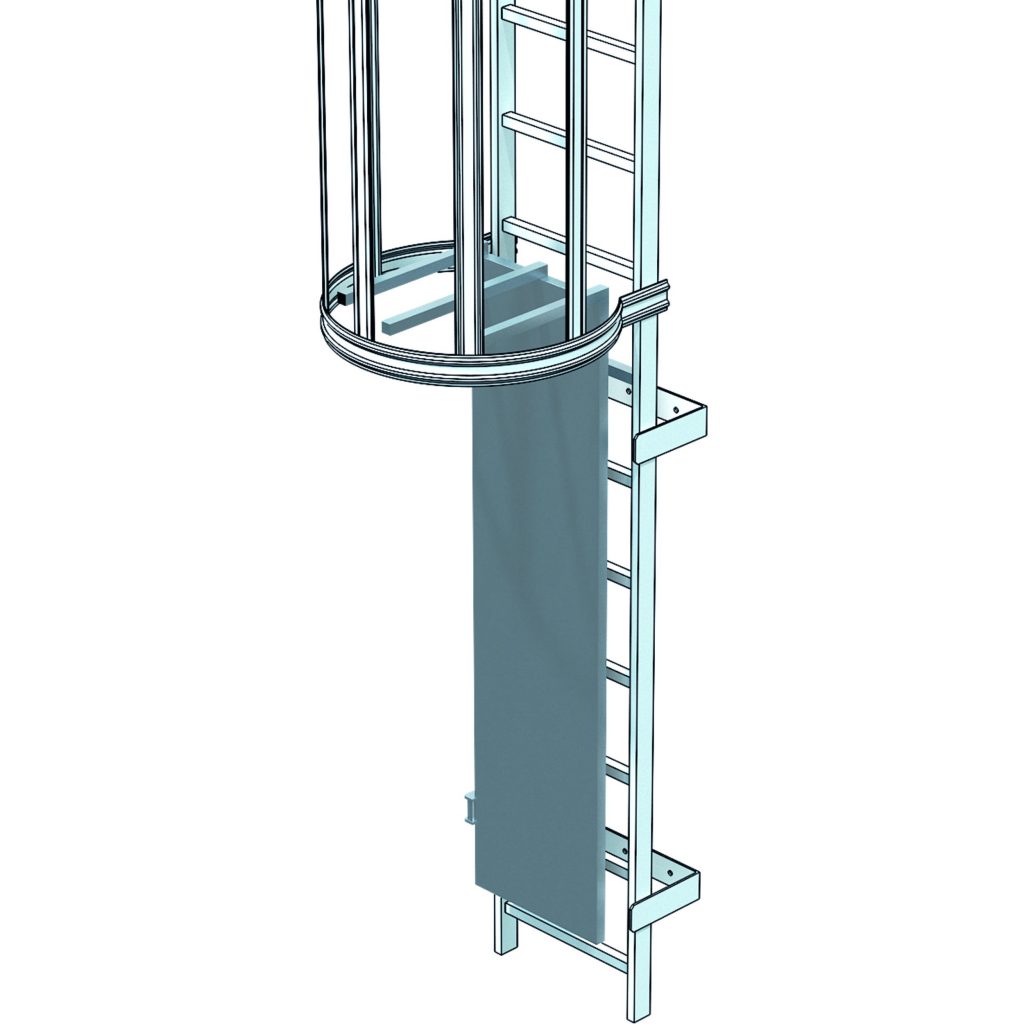
So, as we move into the month of November, use this as an opportunity to review your roofs. Does everyone who has to routinely access them have a safe way of doing so? Have you checked? And a reminder – just because something met the Building Code does not mean it will meet safety legislation.
You can find more resources for your day to day lives at www.fallprevention.ca.
If you like to learn more about how our Occupational Health & Safety Group can help you and your business, contact me or your local Pinchin office.
Links provided by Pinchin are for general information purposes only and do not represent a warranty in any way.

